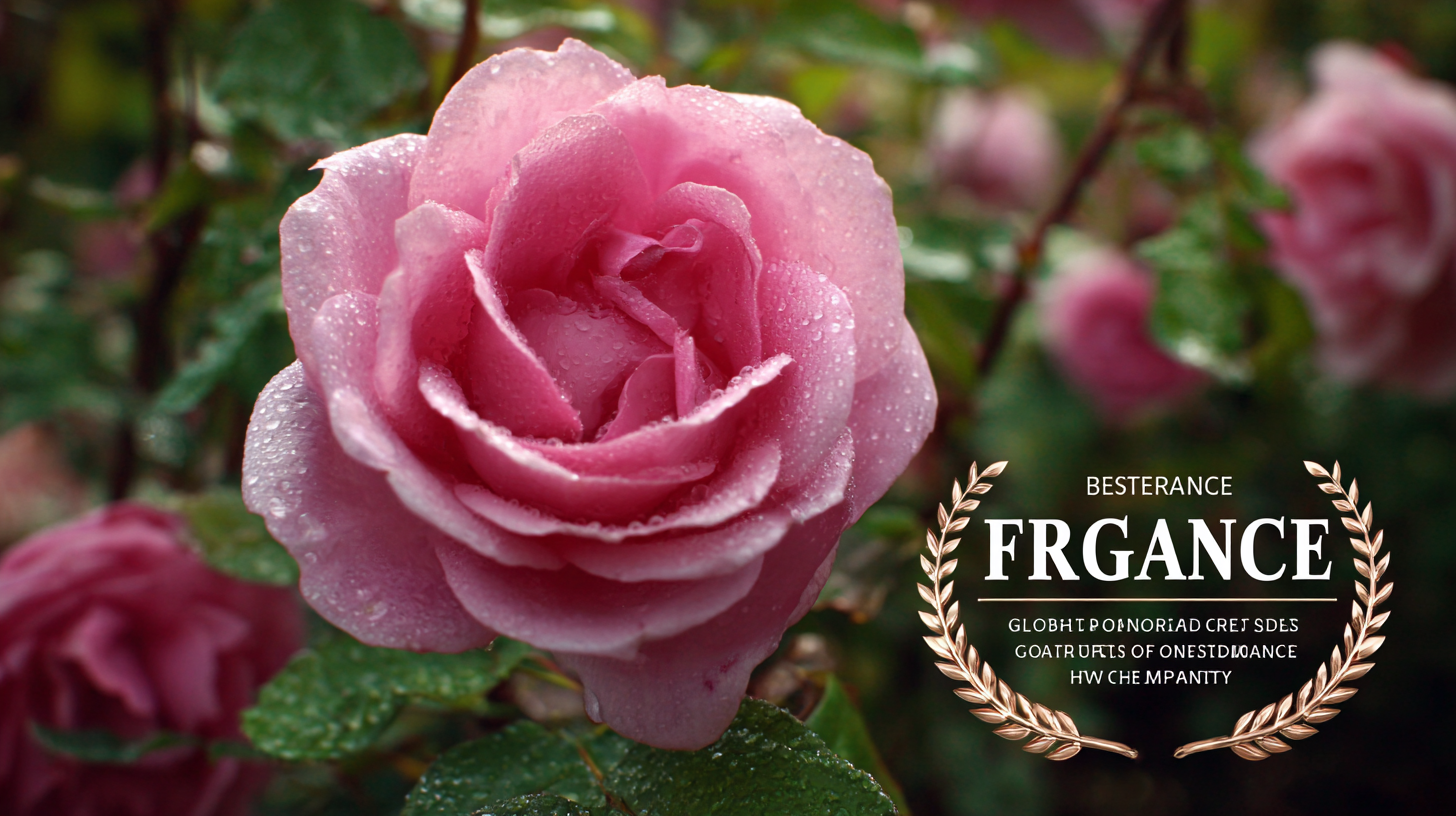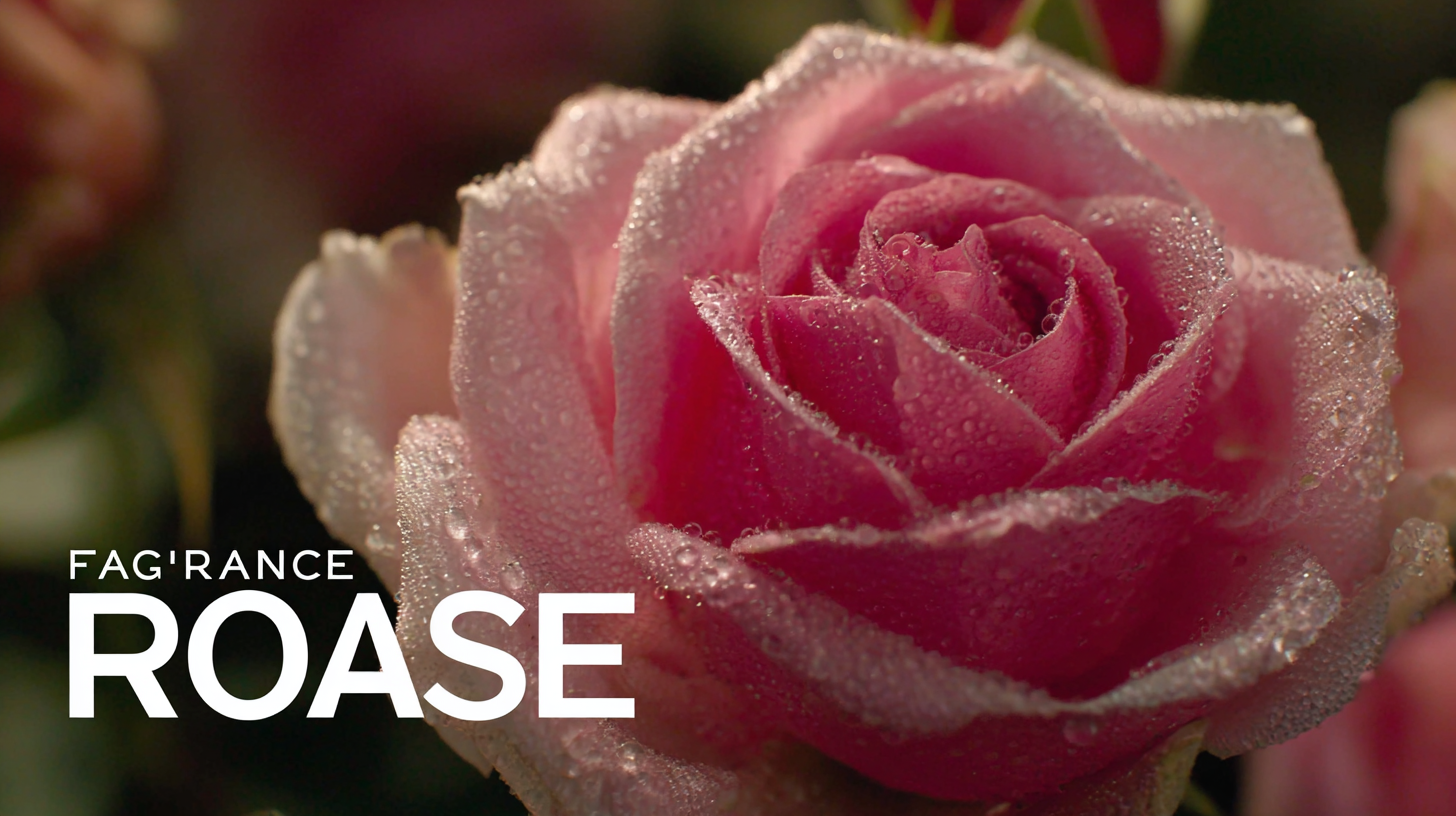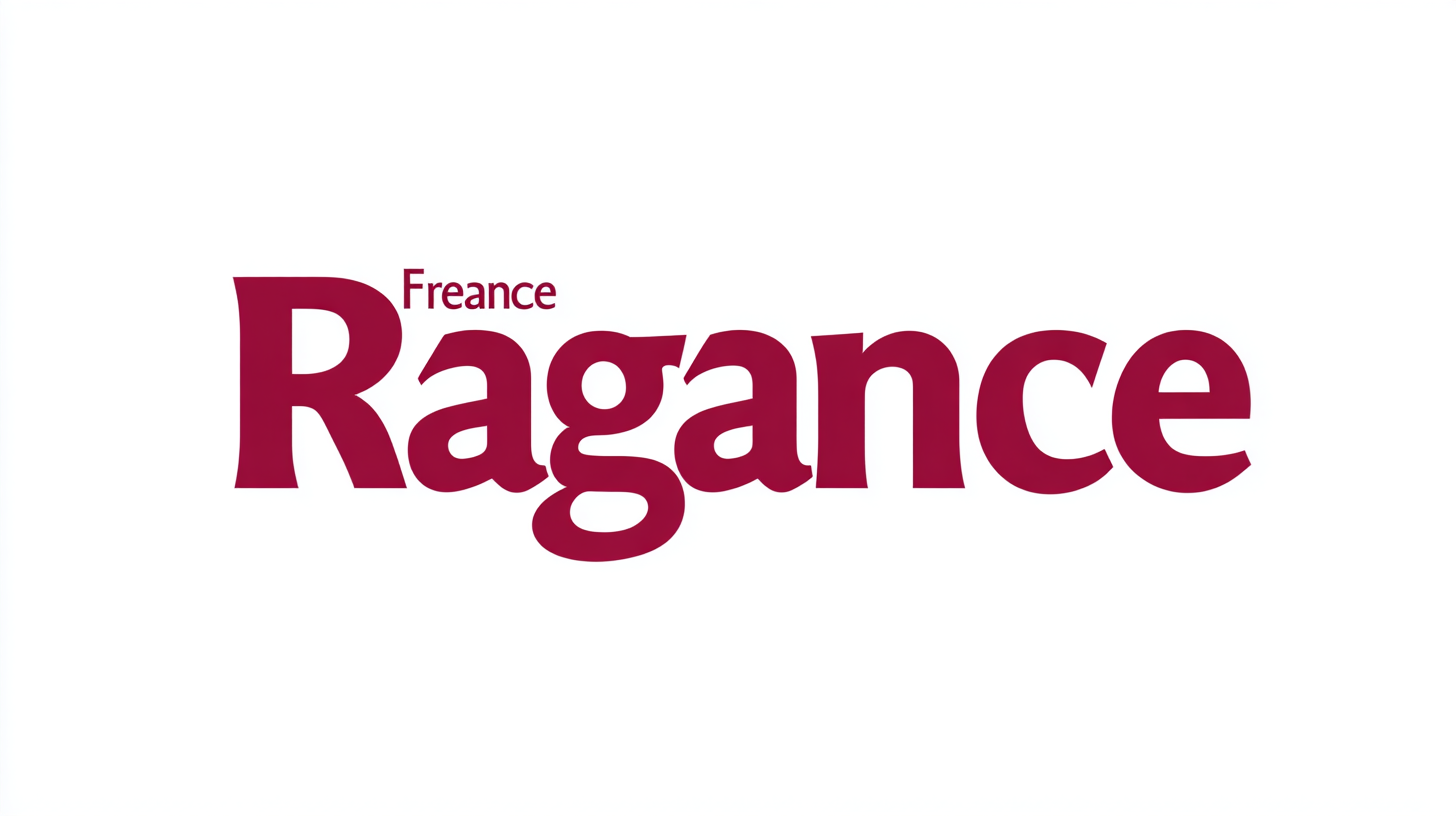
Best Fragrance Rose: Understanding Global Production Standards and How to Choose the Finest Quality
The global fragrance rose market is poised for remarkable growth, with projections indicating a significant increase in demand by 2025. According to recent industry reports, the market is expected to reach a valuation of over $2 billion, driven by the rising consumer preference for natural and organic products. Fragrance roses, valued for their exquisite scent and versatility in various applications such as perfumes, cosmetics, and aromatherapy, are becoming increasingly sought after.

As buyers become more discerning, understanding production standards and quality indicators is crucial for selecting the finest fragrance rose. This blog aims to explore these global production standards and provide insights on how to choose the best quality fragrance roses, ensuring consumers can make informed decisions in a burgeoning market.
Understanding the Importance of Global Standards in Rose Fragrance Production
The significance of global standards in rose fragrance production cannot be overstated, particularly in light of recent challenges faced by key producers. For instance, Bulgarian rose production is projected to decrease by as much as 40% this year due to severe issues impacting the harvest. This decline raises concerns about the quality and consistency of rose oil, which is crucial in the fragrance industry, where purity and authenticity are paramount. Industry reports indicate that the global rose oil market stands at approximately $370 million, highlighting the economic importance of adhering to production standards.
Understanding these standards is essential for both producers and consumers. High-quality rose fragrances are typically derived from carefully cultivated Damascus roses, which must meet stringent quality criteria to be recognized in the market. Organizations that establish these standards provide guidelines on factors such as geographical origin, harvesting methods, and extraction processes. For example, standards like ISO 3535 outline the necessary parameters for the validation of rose oil quality. As the global market for rose fragrances continues to grow, prioritizing these standards will ensure not only economic viability but also the preservation of traditional methods and authenticity in fragrance production.
Key Characteristics of High-Quality Rose Fragrance to Look For
When selecting a high-quality rose fragrance, understanding its key characteristics can significantly enhance your experience. One fundamental aspect to consider is the concentration of essential oils. Premium rose fragrances typically have a higher concentration, around 20-30% essential oils, compared to lower-quality options which may contain as little as 5-10%. According to the international fragrance standards set forth by IFRA (International Fragrance Association), quality is paramount, as it dictates not only the scent profile but also the longevity and overall performance of the fragrance.

Another critical characteristic to assess is the sourcing of the rose oil. Renowned regions such as Grasse in France or Isparta in Turkey are famous for producing high-quality rose oils. These areas are known for their specific climate and soil conditions, which contribute to the rich and complex aroma of their roses. A comprehensive market analysis from Grand View Research highlights that the global rose oil market is expected to grow at a CAGR of 8.1% through 2025, emphasizing the increasing demand for superior rose fragrances.
Tips: When exploring rose fragrances, always check for third-party certifications that indicate sustainable and ethical sourcing. Additionally, consider testing the fragrance on your skin rather than paper, as body chemistry can reveal different facets of the scent, ensuring you find the perfect match for your preferences. Remember, a higher price does not always guarantee better quality, so do your research and seek transparency from brands.
The Role of Sustainability in Rose Cultivation and Production
Sustainability has become a crucial focus in rose cultivation and production, significantly influencing the quality of the fragrance extracted from these blooms. As consumers increasingly prefer eco-friendly options, growers are adopting practices that promote environmental stewardship. Organic farming methods, reduced pesticide use, and responsible water management not only protect the ecosystem but also enhance the aromatic profile of the roses, making them more desirable for fragrance production.

To choose the finest quality rose fragrance, consider looking for products sourced from certified sustainable farms. Here are a few tips: First, check for certifications like EcoCert or Fair Trade, which indicate adherence to environmental and social standards. Additionally, paying attention to the production methods used can provide insights into the fragrance's quality; seek brands that prioritize hand-harvesting and minimal processing. Lastly, don't hesitate to inquire about the rose varieties used, as traditional and heirloom types often yield richer and more complex scents.
Ultimately, sustainable practices in rose production not only benefit the environment but also ensure that the fragrances you choose are of the highest quality. By being mindful of the sourcing and production methods, you contribute to a more sustainable future while enjoying the exquisite aromas that only the finest roses can offer.
Comparative Analysis: Rose Fragrances from China and Around the World
When it comes to rose fragrances, the differences between varieties from China and other countries are stark. Chinese rose oils, particularly from regions like Sichuan, are prized for their rich, complex scents that embody a deep floral essence. In contrast, rose oils from Bulgaria and Turkey are known for their lighter and more refreshing notes, making them suitable for various applications from perfumes to aromatherapy. An important consideration is the extraction method used; steam distillation is common in both regions, but the craftsmanship varies, affecting the overall quality and scent profile.
**Tip 1:** When selecting rose fragrance, look for products that specify the extraction method. High-quality oils usually come from steam distillation, which preserves the delicate floral notes essential for genuine rose scents.
**Tip 2:** Always check for sustainability certifications. Rose production can have a significant environmental impact, so opting for brands that adhere to global production standards ensures you choose fragrances that are both high-quality and ethically sourced.
Comparing different rose fragrances not only enhances your understanding of their unique qualities but also enables you to choose the finest quality for your needs. Understanding the source can profoundly influence your sensory experience, making it essential to explore varieties from different regions.
Best Fragrance Rose: Understanding Global Production Standards and How to Choose the Finest Quality
| Region | Top Variety | Production Volume (Metric Tons) | Aroma Profile | Use Cases |
|---|---|---|---|---|
| China | Damask Rose | 30,000 | Sweet, Floral, Fruity | Perfumes, Aromatherapy |
| Turkey | Turkish Rose | 20,000 | Rich, Spicy, Musky | Luxury Fragrances, Skin Care |
| Bulgaria | Bulgarian Rose | 10,000 | Delicate, Fresh, Floral | Perfume, Essential Oils |
| France | Grasse Rose | 5,000 | Complex, Earthy, Citrusy | High-End Perfumes |
| India | Indian Rose | 8,000 | Spicy, Rich, Warm | Incense, Attars |
How to Select Authentic and Quality Rose Fragrances for Your Needs
When selecting authentic and high-quality rose fragrances, it's essential to understand the various factors that contribute to their production. Start by checking the source of the roses; the best fragrances typically come from regions known for their exceptional rose cultivation, such as Grasse in France or Bulgaria. Look for labels that specify the type of rose used, as certain varieties like Rosa damascena are renowned for their complex and rich aromas.
Tip 1: Always seek products that are labeled as “pure” or “natural.” Synthetic fragrances may smell good, but they lack the depth and nuances that genuine rose oils provide.
Tip 2: Consider the extraction method. Steam distillation is the most common method for rose oil, ensuring that the fragrant compounds remain intact. Cold pressing is typically used for rosehip oil, which is beneficial for skincare but differs in fragrance profile.
Regularly sample different fragrances to find one that resonates with you. Testing fragrances on your skin, rather than just on a blotter, allows you to experience how they evolve throughout the day.
